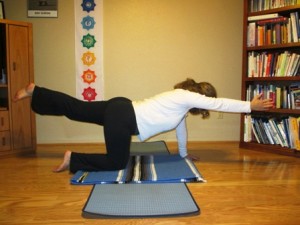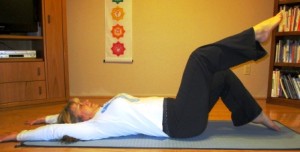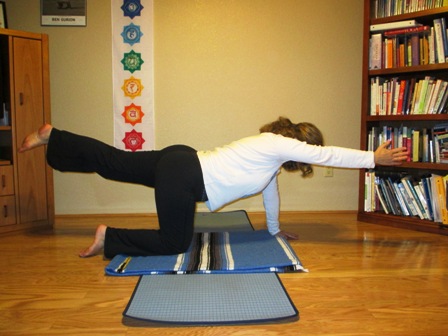Tune In to You-Your “weak link”
Physical stress symptoms vary by the individual-these symptoms are appeals from the body/mind to pay attention! Headaches, clenched jaws, tight shoulders, back pain, digestive disorders, and other manifestations are signals that we need to regroup and tune in to ourselves. Attention to our breath, habits of our body, thinking patterns that do not serve us and removing ourselves from unhealthy life situations will help to decrease susceptibility to illness . All of these are part of what we learn in yoga practice.
Our stress symptoms manifest in areas where we are vulnerable-often called our “weak links”.
As I discussed in this post, a synonym for the yoga experience is indeed awareness.
With regular intelligent practice of physical postures, meditation and yogic breathing, we can systematically awaken to habits that do not serve us, and become fortified for the inevitable internal and external fluctuations of our lives.
My Weak Link
My “weak link” in adulthood has been hip and lower back soreness. Twice over the last four years I have experienced painful and sudden spasms in the tissues surrounding my sacroiliac joints*. An accumulation of life experiences have made this area of my body susceptible when under stress:
1. Automobile accidents: On 2 separate occasions in a 3 year period I was rear ended by distracted drivers.
2. Childbirth: Unrelenting back labor and joint vulnerability from relaxin paired with less than optimal post natal alignment. Birth story here.
3. Weaknesses in the muscles surrounding the sacrum.
3 days versus 3 months
My recovery from my first major sacral incident (not simply a sore back; actually unrelenting spasms in the tissues) took at least 3 months. I taught yoga throughout and worked with a chiropractor weekly in the early stages of recovery.
Recently for no apparent reason, I had a second incident.
Yoga for Core and Hip Stability
Here are three of the preventative practices I have been practicing over the last few years that have supported my exponentially improved recovery timeline: 3 days!

1. Sunbird. This yoga core stabilizer is available to most of my students. Some start with the both hands on the ground and stretch only legs to start keeping hips and shoulders aligned. I also share this with prenatal yoga students.
2. Toe Touches or Marching. Arms can be overhead or by your side. Try to keep the spine and the ribs from flaring up toward the ceiling from overarching. Feel as if movement is coming from the core.



3. Pelvic Tilts. You can see the subtle difference at my lumbar spine between the 2 photos. This move brings awareness of pelvic and lower back alignment, and strengthens the erector spinae muscles. Inhale feeling a gentle arch in the lower back and exhale as back presses to the wall. A bonus is some quadricep strengthening!
+Disclaimer: The usual. Seek the advice of a medical professional who can examine you personally for a diagnosis if you are unsure if these exercises are appropriate for you or make your symptoms worse.

